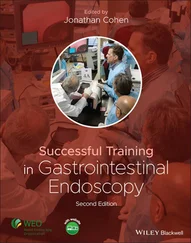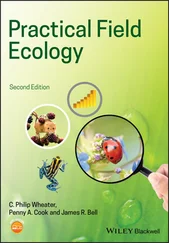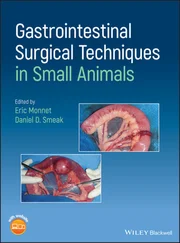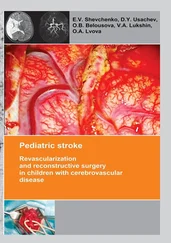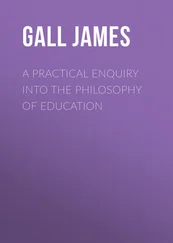5 5 FDA. Design of Endoscopic Retrograde Cholangiopancreatography (ERCP) Duodenoscopes May Impede Effective Cleaning. FDA Safety Communication, Montgomery, MD, 2015.
6 6 ASGE Quality Assurance in Endoscopy Committee. Multisociety guideline on reprocessing flexible gastrointestinal endoscopes: 2011. Gastrointest Endosc 2011, 73(6), 1075–1084.
7 7 Peterson BT, Cohen J, Hambrick III RD, et al. Multisociety guideline on reprocessing flexible GI endoscopes: 2016 update. Gastrointest Endosc 2017, 85(2), 282–294, e1.
8 8 SGNA. Position statement on minimal registered nurse staffing for patient care in the gastrointestinal endoscopy unit. Gastroenterol Nurs 2002, 25(6), 269–270.
9 9 da Silveira EB, Lam E, Martel M, et al. The importance of process issues as predictors of time to endoscopy in patients with acute upper‐GI bleeding using the RUGBE data. Gastrointest Endosc 2006, 64(3), 299–309.
10 10 Mani J, Franklin L, Pall H. Impact of pre‐procedure interventions on no‐show rate in pediatric endoscopy. Children 2015, 2(1), 89–97.
11 11 Tomer G, Choi S, Montalvo A, et al. Improving the timeliness of procedures in a pediatric endoscopy suite. Pediatrics 2014, 133(2), e428–433.
12 12 Jacob DA, Franklin L, Bernstein B, et al. Results from a patient experience study in pediatric gastrointestinal endoscopy. J Patient Exp 2015, 2(2), 23–28.
4 Pediatric procedural sedation and general anesthesia for gastrointestinal endoscopy
Tom Kallay, Rok Orel, and Jernej Brecelj
 KEY POINTS
KEY POINTS
Uniform sedation guidelines should be in place when performing any level of procedural sedation for children.
The sedation practitioner must be able to recognize the various levels of sedation in children of different ages, as it is common for children to pass from the intended level of sedation into a deeper state where physiologic compromise may occur.
Use of end‐tidal capnography during procedural sedation has been shown to reduce episodes of hypoxemia.
New evidence regarding predictors of adverse events has emerged in the setting of upper respiratory infection, obesity, and raises questions about current nil per os guidelines.
Open communication between the gastroenterologist and monitor provides an environment which allows for timely adjustments in medication titration or endoscopic technique.
Sedation or general anesthesia is a prerequisite for safe and effective endoscopic procedures in the majority of pediatric patients. General anesthesia is always performed by an anesthesiologist. Ideally, deep sedation should be performed by an anesthesiologist too, but this depends on national or institutional organization and resources. Even in environments where sedation by nonanesthesiologists is the usual approach, this activity must be organized according to the highest safety standards with a skilled anesthesiologist team available for specific procedures, high‐risk patients or possible complications.
The goals of procedural sedation are to (i) guard the patient’s safety and welfare; (ii) minimize physical discomfort and pain; (iii) control anxiety and minimize psychological trauma (in the child and parents); (iv) control behavior and/or movement to allow the safe completion of the procedure; and (v) return the patient to a state in which safe discharge from medical supervision is possible.
Definitions/spectrum of sedation to general anesthesia
There are four levels of sedation defined by the American Society of Anesthesiologists (ASA), and these may be thought of as a continuum: minimal sedation (anxiolysis), moderate sedation and analgesia (conscious sedation), deep sedation (unconscious), and general anesthesia.
Anxiolysis is a drug‐induced state where motor and cognitive functions may be impaired, but the patient responds to verbal commands. Ventilatory and cardiovascular functions are largely unaffected with anxiolysis.
During moderate sedation, also known as conscious sedation, the child may respond purposefully to verbal commands (e.g., “open your eyes”) with or without light tactile stimulation. Airway and cardiovascular function are unaffected; however, endoscopy presents a unique challenge as the tools employed for the procedure can predispose some patients to airway obstruction. This is especially relevant in smaller children, where the trachea is smaller and with soft cartilaginous rings, and more prone to obstruction than that of an older child with a larger, more rigid airway. In some cases where there is considerable risk of airway obstruction with endoscopy, intubation may be indicated. Due to the relative size of the endoscope and discomfort involved in its placement, moderate sedation is rarely successful in children when performing this procedure, unless the patient is old enough to cooperate.
Deep sedation refers to a state in which the child responds only to deep or repeated stimulation, and ventilation may be impaired. Patients may require assistance with ventilation or maintaining an airway, but cardiovascular function is usually maintained. One can anticipate a partial or complete loss of airway protective reflexes in this state, and preparations must be in place to accommodate for this.
General anesthesia describes a state in which there is no response to painful stimuli, and ventilation assistance is usually required due to depressed consciousness and neuromuscular function. Hemodynamic function may be compromised as well.
General anesthesia with endotracheal intubation is mandatory in patients graded III or higher according to the ASA physical status classification III ( Box 4.1), in emergent procedures such as gastrointestinal bleeding or foreign body removal or more complex procedures such as endoscopic gastrostomy insertions or stenosis dilations. In interventional endoscopic procedures, a tracheal tube provides some airway protection against aspiration.
Sedation and analgesia for diagnostic and therapeutic endoscopy in children carries a number of considerations dependent on differences in age, developmental status, and presence of co‐morbidities. One of the goals in sedating children is to control behavior, which is entirely dependent on their chronological and developmental age. Children younger than 6 or 7 years often require a deep level of sedation in order to safely complete an uncomfortable procedure, where respiratory drive, airway patency and protective reflexes may be compromised. Studies have shown that it is common for children to pass from the intended level of sedation into a deeper state in an effort to control their behavior, where physiologic compromise may occur. In order to provide the safest conditions for a child undergoing sedation, it is important to understand the definitions pertaining to level of consciousness, as well as having the ability to rescue a child from a deeper level of sedation than was intended.
Box 4.1ASA physical status classification
Class I A normal healthy patient
Class II A patient with mild systemic disease (e.g., controlled reactive airway disease)
Class III A patient with severe systemic disease (e.g., a child who is actively wheezing)
Class IV A patient with severe systemic disease that is a constant threat to life
Class V A moribund patient who is not expected to survive without the operation
Assessing risk in the pediatric patient
The Pediatric Sedation Research Consortium (PSRC) is a collaborative of 40 hospitals and universities in the United States and Canada with a mission dedicated to understanding and improving the process of pediatric sedation and sedation outcomes. Member institutions prospectively enroll pediatric patients receiving sedation for all procedures outside the operating room, and the data are entered into a central database. This rich database has contributed a great deal to pediatric procedural sedation literature over the last 10 years.
Читать дальше
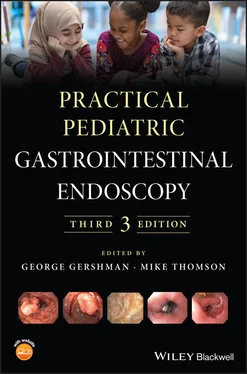
 KEY POINTS
KEY POINTS
